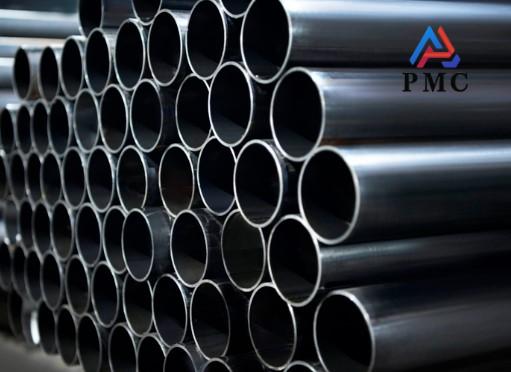
ERW Pipe Thickness Chart
ERW (Electric Resistance Welded) pipe—also referred to as high-frequency resistance welded steel pipe—is a type of steel pipe manufactured through the continuous forming of cold-rolled steel strip (coil). During the process, the edges of the strip are heated using the skin effect and proximity effect of high-frequency electric current. Once the edges reach the welding temperature, they are joined together under pressure, forming a strong, continuous weld seam.
ERW (Electric Resistance Welded) pipes and tubes are manufactured in a broad range of sizes, typically ranging from 1/2 inch to 24 inches in outside diameter. They are available in various wall thicknesses to suit different application needs, with common thickness options spanning from 2 mm up to 12.7 mm.
ERW pipe & tube thickness chart:
|
DN |
Out Diameter |
Thickness Chart |
|||||||||||||||
|
A series |
B series |
Sch |
Sch |
Sch |
LG |
Sch |
Sch |
STD |
Sch |
Sch |
XS |
Sch |
Sch |
Sch |
Sch |
Sch |
|
|
32 |
42.4 |
38 |
1.6 |
2.8 |
3.2 |
- |
- |
- |
- |
3.6 |
- |
- |
5.0 |
- |
- |
- |
6.3 |
|
65 |
76.1 |
76 |
2.0 |
3.0 |
3.6 |
- |
4.5 |
- |
- |
5.0 |
- |
- |
7.1 |
- |
- |
- |
10.0 |
|
100 |
114.3 |
108 |
2.0 |
3.0 |
4.0 |
- |
5.0 |
- |
- |
5.9 |
- |
- |
8.8 |
- |
11.0 |
- |
14.2 |
|
200 |
219.1 |
219 |
2.9 |
4.0 |
6.3 |
- |
6.3 |
7.1 |
- |
8.0 |
10.0 |
- |
12.5 |
16.0 |
17.5 |
20.0 |
22.2 |
|
350 |
355.6 |
377 |
4.0 |
5.0 |
- |
8.0 |
8.0 |
10.0 |
10.0 |
11.0 |
16.0 |
13.0 |
20.0 |
25.8 |
28.0 |
32.0 |
36.0 |

Factors affecting ERW pipe thickness
1. Stress factors
The pressure of the conveying medium is a key factor in determining the thickness of ERW pipe. Pressure and pipe thickness are positively correlated: the greater the pressure of the conveying medium, the thicker the pipe needs to be to withstand the pressure and prevent safety incidents such as rupture and deformation caused by excessive pressure.
2. Usage environment
Different operating environments have different requirements for ERW pipe thickness. In corrosive environments, such as chemical plants transporting corrosive media like acids and alkalis, the media will continuously erode the inner wall of the pipe, so increasing the pipe thickness is necessary to extend its service life.
3. Material properties
ERW pipes made of different materials have different thicknesses. Common ERW pipe materials include carbon steel, stainless steel, and alloy steel. Carbon steel pipes are relatively inexpensive and widely used, but their corrosion resistance is relatively weak. In general water transportation, low-pressure gas transportation, and other scenarios, the thickness is determined based on the pressure and operating environment.
Application scenarios of ERW pipes of different thicknesses
1. Thin-walled pipes
Thin-walled ERW pipes generally have a thickness of 2-4 mm. Due to their light weight and relatively low cost, they are widely used in some scenarios where pressure requirements are not high and weight restrictions are strict.
2. Thick-walled pipes
Thick-walled ERW pipes are typically over 8mm thick and offer high strength and pressure resistance, making them suitable for high-pressure environments and harsh working conditions that place extreme demands on pipe strength and corrosion resistance.
How to choose the right thickness of ERW pipe?
Choosing the appropriate ERW pipe thickness requires comprehensive consideration of many factors. First, the pressure of the conveying medium must be considered. Reference a data table or calculation formula that correlates pressure and pipe thickness to accurately calculate the minimum thickness required to meet pressure requirements.
Secondly, consider the impact of the operating environment. If the pipe is in a highly corrosive environment, in addition to increasing the thickness, you can also choose corrosion-resistant materials or perform anti-corrosion treatment on the pipe. In a high-temperature environment, in addition to increasing the thickness, you also need to choose high-temperature resistant materials to ensure that the pipe can maintain good performance even at high temperatures.
Furthermore, from a cost-effectiveness perspective, while meeting the project safety and performance requirements, compare the prices, service life, maintenance costs, etc. of pipes of different thicknesses and choose the most cost-effective solution.
During the actual selection process, it's also important to consider relevant standards and specifications, such as GB/T 3091 and API 5L, to ensure the selected pipe thickness meets these requirements. It's also essential to consult with professional engineers or technicians to gain their experience and advice.
- 【Prev】 : Steel Casing Pipe VS. Tubing
- 【Next】 : Seamless Steel Pipe Sizes


